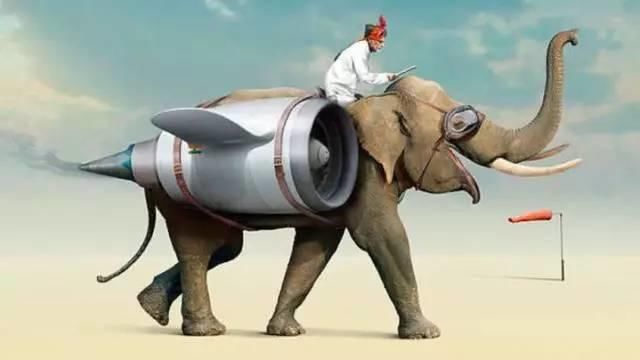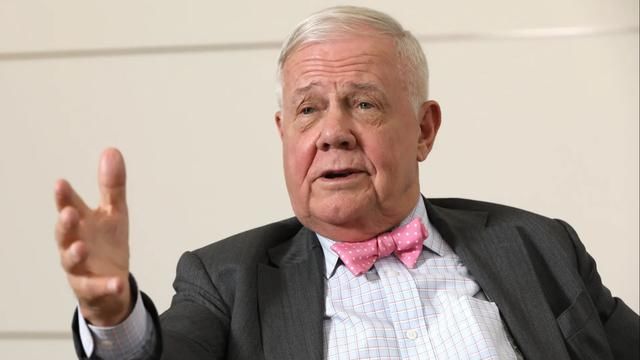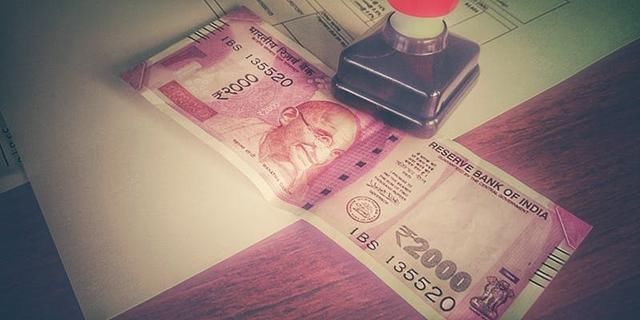Although the Central Bank of India has entered the channel of interest rate cuts in advance, this year has been three consecutive interest rate cuts, a total of 75 basis points, but according to the data released by the Indian Central Bureau of Statistics, India's economic growth rate in the first quarter of this year was 5.8%, the lowest level in nearly five years.
The International Monetary Fund's recent World Economic Outlook Report pointed out that weak domestic demand in India has led to a slowdown in economic growth. So far this year, foreign investors have sold $4.44 billion and $7.34 billion in Indian equity and bond markets, respectively. The withdrawal of global money from India may be accelerating.

It is worth noting that recently, Wall Street commodity king Jim Rogers once again issued a call to the market to "snipe the Indian economy", and Rogers has been long-term bearish on the Indian economy for many years. In an interview with the Indian media, he warned that the Indian economy could be in debt trouble and said, "They don't understand the economy at all."
Rogers also said that before May 2014, I had investments in India, but I sold my Indian stocks a few weeks later. Since then, I have not invested anything in India. India's debt-to-gross domestic product ratio continues to rise, and the fiscal deficit is a concern. So what exactly is the debt deficit in the Indian economy? The following data may be revealing the true picture of India's economy.

At the end of 2018, India's public debt reached about $1.19 trillion, but central bank data also showed that India's foreign reserves were only about $401.776 billion. It is not difficult to see that India's foreign reserves and debts show a serious inverted pattern. In addition, the data shows that in 2017 alone, the annual interest payments on foreign debt already accounted for 26% of India's fiscal revenue.
Therefore, in the absence of a broad foreign exchange reserve moat, the Indian economy's ability to cope with the risk of global economic fragmentation is very vulnerable, which is not difficult to understand, recently, global capital is accelerating out of India, Rogers renewed the "sniper India" call for some reasons.
It is worth noting that although India's economic growth index has been higher than 7% in recent years, many economists in India have questioned the existence of huge data falsification behind the index of India's high economic growth in recent years. For example, the Hindustan Times recently reported that former RBI Governor Raghuram Rajan expressed skepticism, saying, "I just think we need to basically clean up now, find out what is actually confusing with the new GDP numbers, and revise it." "

Mr Rajan, a former chief economist at the International Monetary Fund, said: "I know a Union minister said, 'How can we grow at 7 per cent? Well, there is a possibility that India's real growth rate is not 7 percent." Anand Sharma, the senior speaker of the Indian Parliament, said that over the past few years, India's economy has been "gasping" rather than "galloping". Interestingly, for the controversy over India's economic data, the Indian Federation warned four years ago that the new algorithm was adjusted to be "more in line with international practice."
Clearly, there are a number of signs that India, once hailed as a global growth miracle, is in doubt, and may even decline back into shape because of its debt woes. So who will be the next India? Royal Bank of Canada has pointed out that the situation in India and Vietnam is very similar, with very limited borrowing capacity. After all, Vietnam's economy has also shown rapid exponential growth in recent years, but it may also decline back to its original form because of debt problems.
According to the Saigon Economic Times, by the end of 2016 alone, Vietnam's total debt had exceeded $125 billion. The HSBC report predicts that Vietnam may approach the debt ratio ceiling of 65% in 2019, and has listed Vietnam as the country in Southeast Asia that needs the most fiscal consolidation. At present, Vietnam's foreign exchange reserves are only $63.5 billion. Clearly, Vietnam's foreign exchange reserves, like India's, look very weak, as does its ability to withstand economic risks.
As a result, we are seeing a scene in which the miracle of Vietnam's high economic growth may be coming to an abrupt end. For example, Vietnam's economic growth slowed to 6.8% in the first quarter of this year from 7.5% in the same period in 2018. The International Monetary Fund (IMF) recently said it expects Vietnam's economic growth to slow to 6.5% for the whole of 2019 from a high of 7.1% in 2018.
It is worth mentioning that there is another similarity between the Indian and Vietnamese economies, which is the massive development of manufacturing in recent years. However, Gerry Mattios, a vice president at Bain & Company, was quoted by CNBC earlier as saying that global manufacturing plant facilities will become more fragmented. We don't think places like Southeast Asia will become the workshop of the world. People in these places tend to see only some assembly lines, but not all.

The BWC Chinese Website observer team noted that in terms of transportation, railways and other infrastructure, many places in India and Vietnam are even worse than Ethiopia in Africa. As a result, Vietnam in Southeast Asia and India in South Asia are unlikely, or very difficult, to become the world's next factory. According to the indications mentioned earlier in this article, on the contrary, after Rogers issued the order to "sniper India", Vietnam may well be next. Vietnam's economy is in trouble due to high foreign debt and low foreign reserves, and may become the next India. (over)